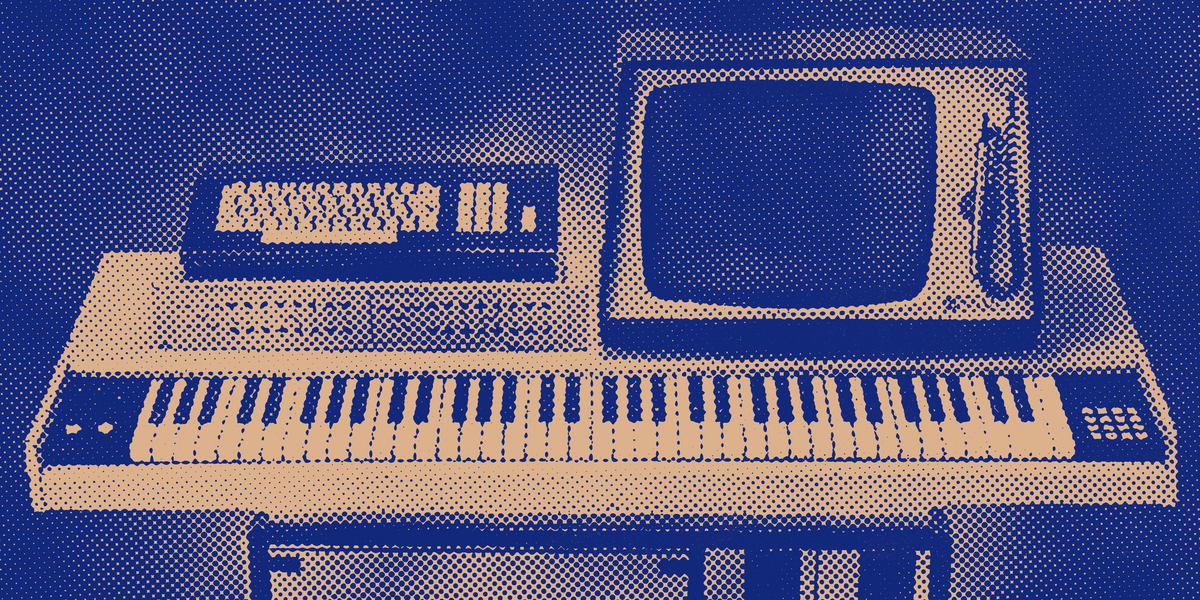How Australia invented digital sampling with the Fairlight CMI
Sampling is such a common part of music production that it's hard to think that it was invented only decades ago, and invented in Australia, at that. This is the story of the Fairlight CMI and the birth of digital sample culture.

The Fairlight CMI (Computer Musical Instrument), a pioneering digital synthesizer, is a cornerstone in the edifice of electronic music. Its introduction in the late 1970s marked a seismic shift in the sonic landscape, offering musicians a new palette of sounds and a novel approach to composition. This article delves into the history of the Fairlight CMI, its cultural impact, and its enduring legacy in the music industry.
The Birth of the Fairlight CMI
The Fairlight CMI was born out of the shared vision of two Australian inventors, Peter Vogel and Kim Ryrie. Both had a deep fascination with the intersection of music and technology, and in 1975, they embarked on a journey to create a computer-based instrument that could digitally replicate the sounds of any musical instrument. This was a groundbreaking concept at the time, and it would ultimately revolutionize the music industry.
The name "Fairlight" was inspired by a hydrofoil ferry that regularly passed by the waterfront where Vogel and Ryrie were working. During a lunch break, Vogel suggested the name, and it stuck, becoming the moniker for one of the most influential instruments in music history.
After years of development, the Fairlight CMI was unveiled in 1979. It was the world's first digital sampling synthesizer, a marvel of its time. The Fairlight CMI was not just a synthesizer; it was a complete music production system that included a keyboard, a typewriter-like interface, and a computer for sound processing. Its ability to sample real-world sounds, manipulate them, and play them back was revolutionary, offering musicians a new palette of sounds and a novel approach to composition.
Cultural Impact
The Fairlight CMI's impact on music was immediate and profound. It was embraced by artists across genres, from progressive rock to pop, classical to electronic. Its unique sound can be heard on countless tracks from the 1980s and beyond, and it became a staple in the studios of pioneering artists like Peter Gabriel, Kate Bush, and Jean-Michel Jarre.
The Fairlight's distinctive "Orchestra Hit" became a ubiquitous sound in pop music, gracing hits from Afrika Bambaataa's "Planet Rock" to Bruno Mars' "Finesse". Its ability to sample and manipulate sounds was instrumental in the development of new music genres like hip hop, house, and techno. It democratized music production, giving artists the ability to create complex arrangements without the need for a full orchestra or expensive studio time.
The Fairlight CMI also had a significant cultural impact beyond the music it helped create. It was one of the first instruments to bring the power of digital technology into the music studio, paving the way for future developments in digital music, from software synthesizers to modern DAWs (Digital Audio Workstations). Its innovative use of sampling has become a standard in music production, and its iconic interface has influenced the design of music software.
Despite its high cost, which made it inaccessible to many at the time, the Fairlight CMI has left an indelible mark on the music industry. Today, it is revered as a symbol of a transformative period in music history, and its distinctive sounds continue to be used and celebrated.
The Fairlight CMI - How It Worked
The Fairlight CMI was a marvel of engineering, combining several innovative technologies to create a unique musical instrument. At its core, the Fairlight was a digital sampler. It could record a short snippet of any sound, convert it into digital data, and then play it back at different pitches to create musical notes. This process, known as sampling, was revolutionary at the time and is now a standard technique in digital music.
The Fairlight CMI was also a sequencer, meaning it could record and play back a series of notes, allowing musicians to create complex compositions. The sequencer worked in tandem with the Fairlight's Music Composition Language (MCL), a programming language designed specifically for music composition.
The Fairlight's user interface was another key part of its design. It featured a dual-manual alphanumeric keyboard for playing notes and entering commands, and a light pen and cathode ray tube graphic display for drawing and manipulating waveforms. This hands-on, visual approach to sound design was groundbreaking and has influenced many modern music software interfaces.
Emulation and Preservation of the Fairlight CMI
The Fairlight CMI's legacy has been preserved and emulated in various ways over the years. Due to the original instrument's high cost and rarity, software emulations have become a popular way for musicians to access the Fairlight's unique sounds and capabilities. These emulations replicate the Fairlight's sound engine and user interface, allowing users to experience the Fairlight on modern computers and digital audio workstations.
One notable example is the Arturia CMI V, a software plugin that meticulously recreates the Fairlight CMI. It includes all the original instrument's features, along with modern enhancements like expanded polyphony and advanced modulation options.
In addition to software emulations, the Fairlight CMI has been preserved in several music technology museums and collections around the world. These institutions often offer demonstrations and workshops, allowing visitors to see and hear the Fairlight in action.
Furthermore, the original Fairlight company, now known as Fairlight Instruments, has continued to develop and release new versions of the Fairlight CMI. These modern iterations maintain the spirit of the original instrument while incorporating new technologies and features.
The Fairlight CMI's enduring influence and continued relevance are a testament to its groundbreaking design and cultural impact. Whether through software emulations, museum exhibits, or new hardware versions, the Fairlight CMI continues to inspire and fascinate musicians around the world.
Legacy and Influence
The Fairlight CMI's influence extends beyond the music it helped create. It paved the way for future developments in digital music, from software synthesizers to modern DAWs (Digital Audio Workstations). Its innovative use of sampling has become a standard in music production, and its iconic interface has influenced the design of music software.
Despite its high cost, which made it inaccessible to many at the time, the Fairlight CMI has left an indelible mark on the music industry. Today, it is revered as a symbol of a transformative period in music history, and its distinctive sounds continue to be used and celebrated.
The Fairlight CMI was more than just a musical instrument; it was a revolution in sound. It broke down barriers, expanded musical horizons, and changed the way we create and listen to music. Its legacy is a testament to the power of innovation, and its story is a fascinating chapter in the history of music technology.


